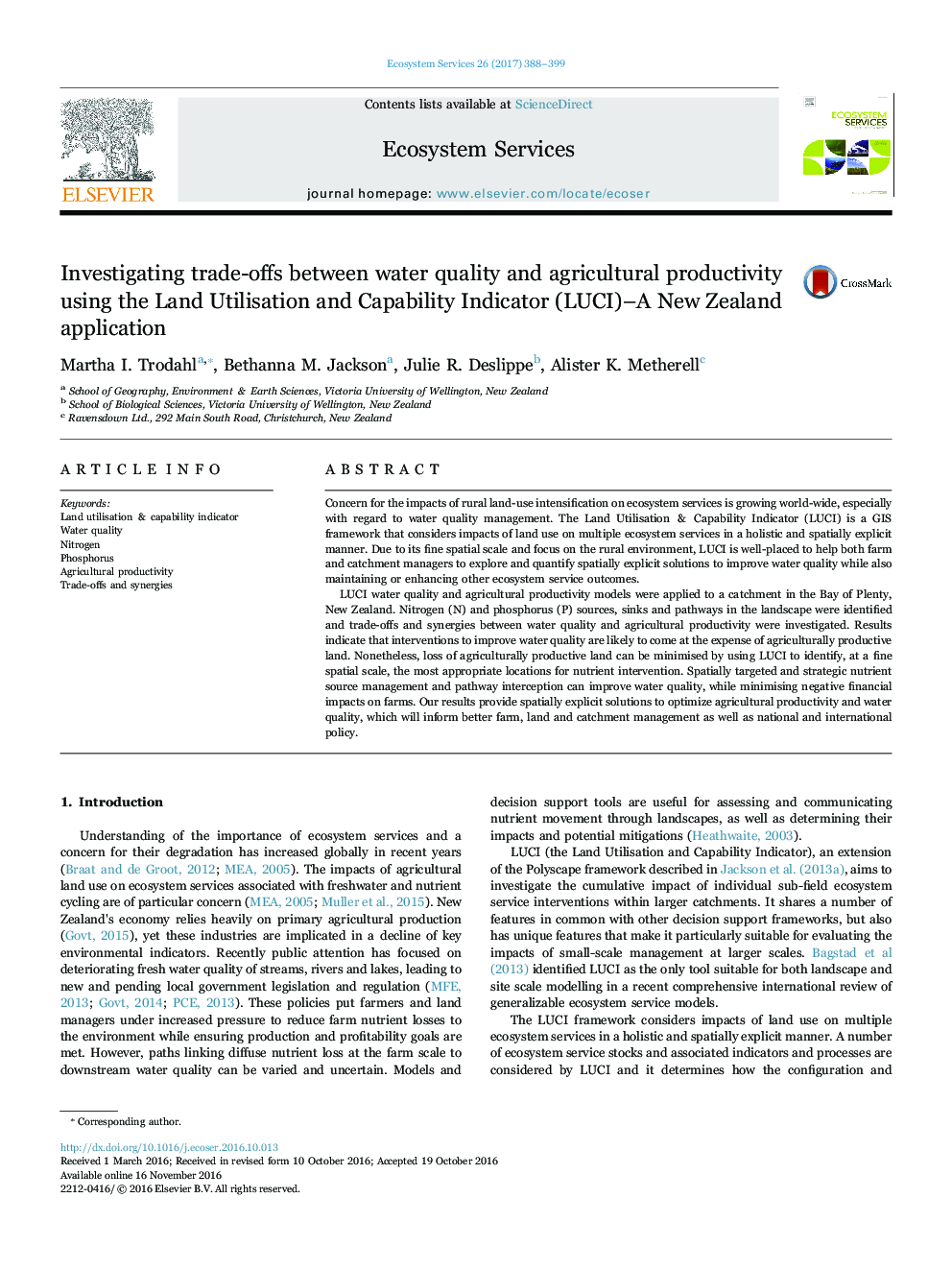| کد مقاله | کد نشریه | سال انتشار | مقاله انگلیسی | نسخه تمام متن |
|---|---|---|---|---|
| 6463561 | 1362119 | 2017 | 12 صفحه PDF | دانلود رایگان |
- LUCI water quality & agricultural productivity application in New Zealand catchment.
- Water quality (N & P) improvements require loss of productive land.
- Spatially targeted interventions can significantly reduce productivity loss.
- LUCI results inform farm to catchment managers, and national to global policy makers.
Concern for the impacts of rural land-use intensification on ecosystem services is growing world-wide, especially with regard to water quality management. The Land Utilisation & Capability Indicator (LUCI) is a GIS framework that considers impacts of land use on multiple ecosystem services in a holistic and spatially explicit manner. Due to its fine spatial scale and focus on the rural environment, LUCI is well-placed to help both farm and catchment managers to explore and quantify spatially explicit solutions to improve water quality while also maintaining or enhancing other ecosystem service outcomes.LUCI water quality and agricultural productivity models were applied to a catchment in the Bay of Plenty, New Zealand. Nitrogen (N) and phosphorus (P) sources, sinks and pathways in the landscape were identified and trade-offs and synergies between water quality and agricultural productivity were investigated. Results indicate that interventions to improve water quality are likely to come at the expense of agriculturally productive land. Nonetheless, loss of agriculturally productive land can be minimised by using LUCI to identify, at a fine spatial scale, the most appropriate locations for nutrient intervention. Spatially targeted and strategic nutrient source management and pathway interception can improve water quality, while minimising negative financial impacts on farms. Our results provide spatially explicit solutions to optimize agricultural productivity and water quality, which will inform better farm, land and catchment management as well as national and international policy.
Journal: Ecosystem Services - Volume 26, Part B, August 2017, Pages 388-399
